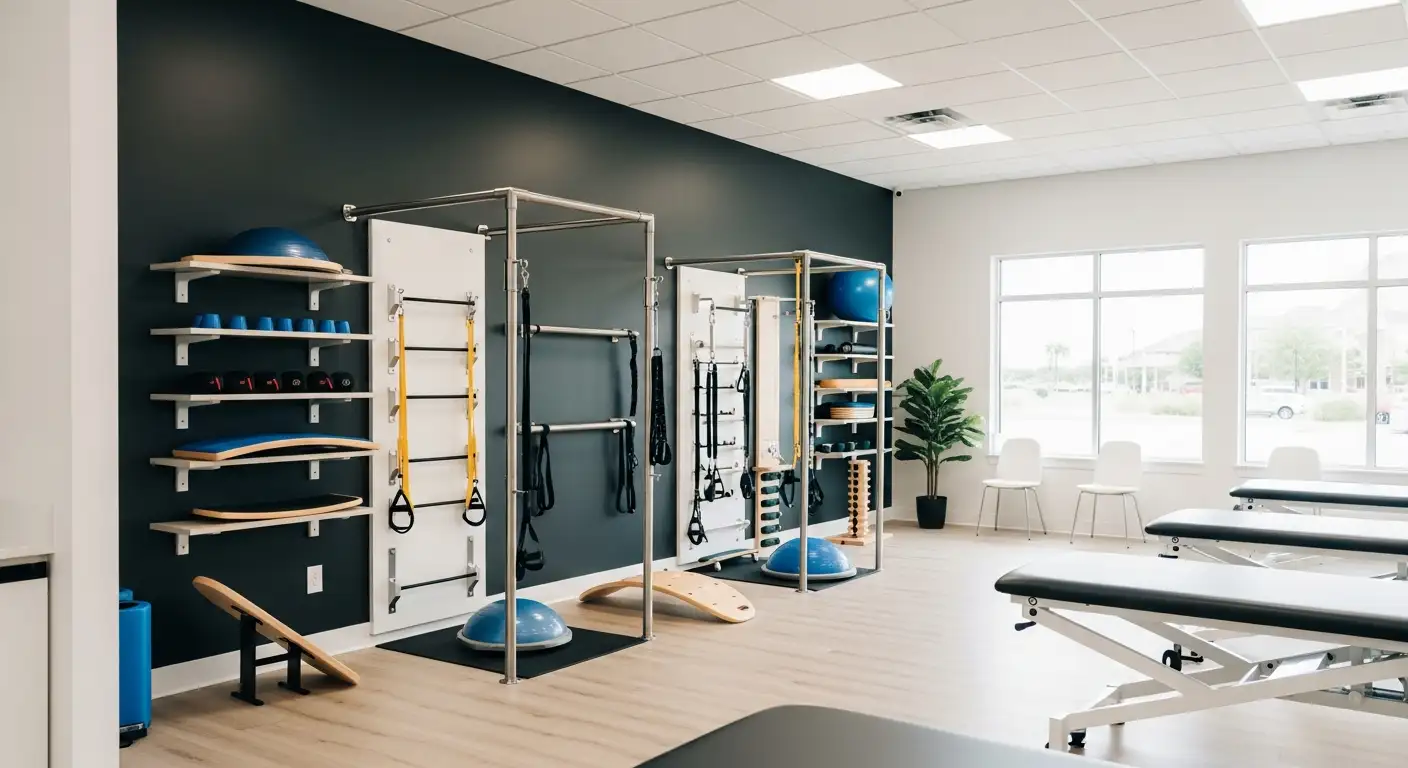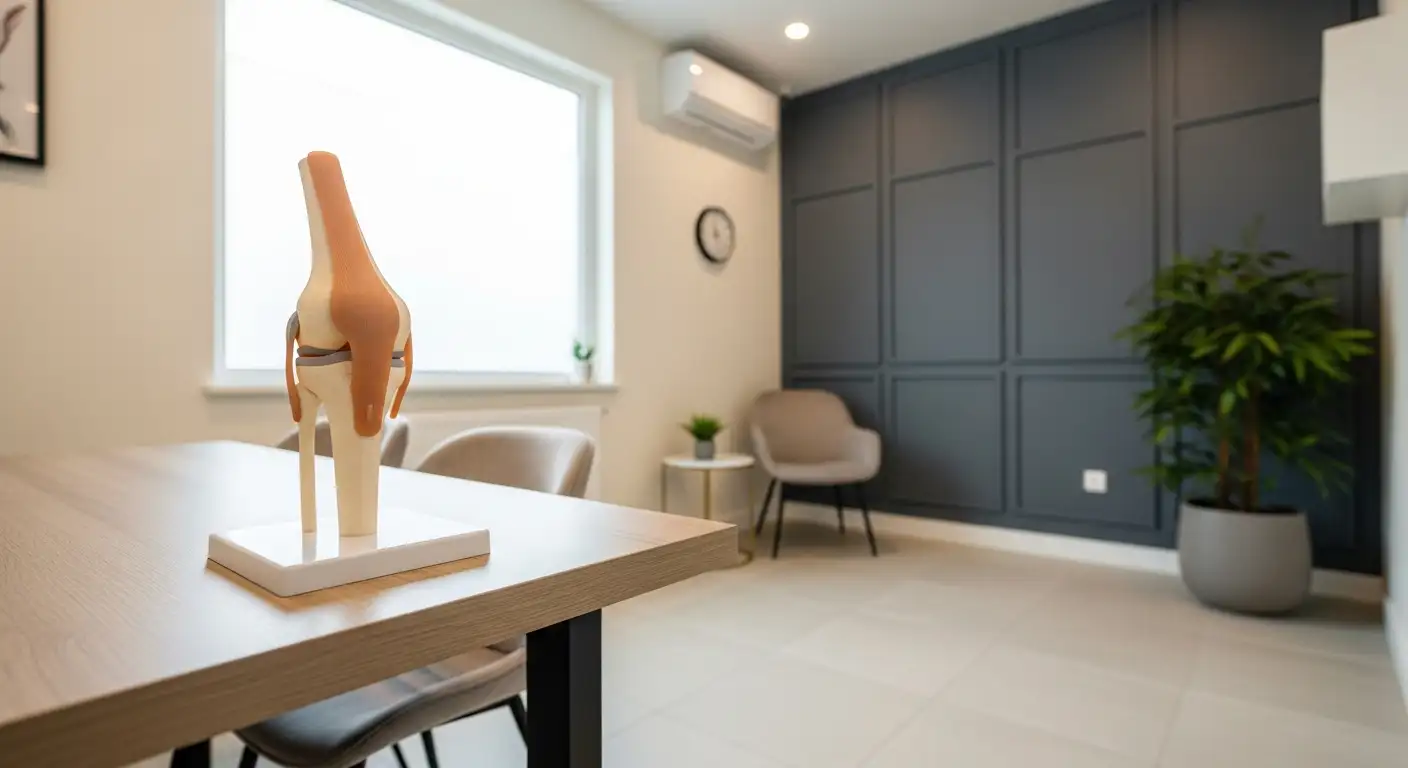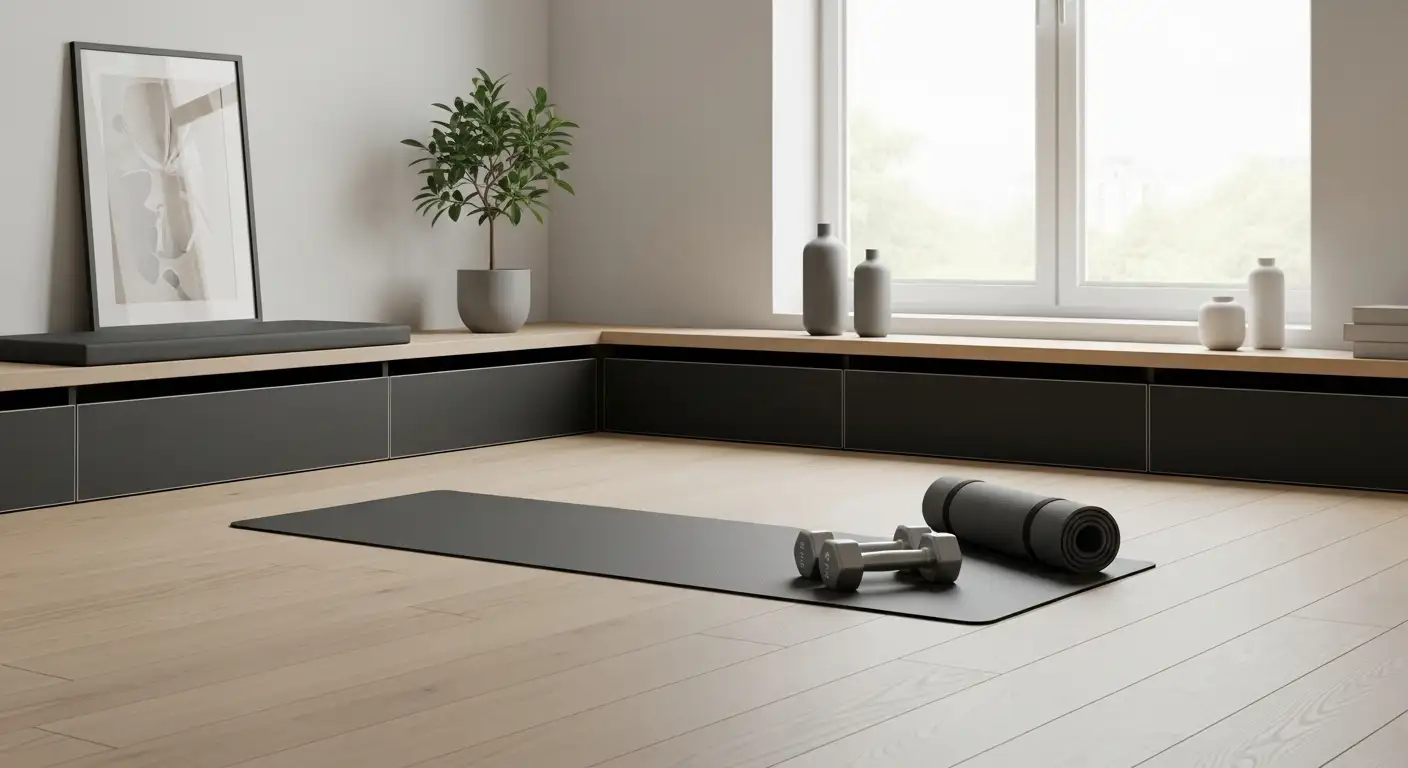Understanding Knee Pain
Knee pain can significantly impact an individual's quality of life, causing limitations in mobility and daily activities. Understanding the causes and effects of knee pain is essential for finding effective solutions, such as knee wraps for pain.

Causes of Knee Pain
Knee pain can arise from various conditions and factors, including:
Cause of Knee PainDescriptionOsteoarthritisDegenerative joint disease causing gradual joint breakdown.InjuryDamage to ligaments, meniscus, or bones leading to acute pain.OveruseStrain caused by repetitive activities.ObesityIncreased stress on knee joints due to higher body weight.
Impact of Knee Pain
The impact of knee pain can extend beyond physical discomfort. It can affect emotional well-being and limit participation in daily activities. Individuals suffering from knee pain may experience:
Studies show that patients with knee osteoarthritis who utilized knee braces reported a 54% reduction in pain symptoms. Some even noted a significant improvement in symptoms, which highlights the effectiveness of various knee support options to alleviate pain [2]. Addressing knee pain through the appropriate management and support options is vital for enhancing both mobility and overall well-being.
Exploring Knee Support Options
When it comes to managing knee pain, individuals have various support options to consider, particularly knee wraps and knee sleeves. Both of these options serve to enhance stability and comfort, but they do so in different ways.
Knee Wraps vs. Knee Sleeves
Knee wraps are long, elastic strips of fabric designed to provide exceptional support during high-intensity activities. They create a cast-like effect around the knee, which can significantly stabilize the joint. Wraps are especially beneficial during exercises like squats and deadlifts, as they assist in storing elastic energy during the squat descent and can lead to a rebound effect.
On the other hand, knee sleeves are made of thicker, more compressive materials that provide warmth and support to the knee joint. They work by improving blood circulation and can help in reducing swelling, making them ideal for recovery after exercise.
FeatureKnee WrapsKnee SleevesSupport LevelHighModerateMaterialElastic fabricNeoprene or elastic blendMain PurposeStability during heavy liftingCompression and warmthUsagePowerlifting and intense liftingGeneral support and recovery
Benefits of Knee Wraps
Knee wraps provide several advantages, especially during heavy lifting sessions. They offer high levels of support and stability, essential for minimizing knee joint strain during demanding exercises like squats and deadlifts. Research indicates that wearing knee wraps during back squats can lead to a 39% reduction in horizontal barbell displacement compared to lifting without them. This ensures better form and capability to handle heavier loads PubMed.
Moreover, using knee wraps helps increase vertical impulse applied to the center of mass by 10%, enhancing lift efficiency PubMed. This makes knee wraps particularly suitable for individuals seeking maximal support during powerlifting sessions or high-intensity strength training.
Benefits of Knee Sleeves
Knee sleeves, while not as supportive as wraps, offer significant benefits for everyday use. They provide warmth to the knee joint, which can increase flexibility and decrease stiffness during workouts. The compression effect of knee sleeves aids in enhancing circulation, reducing swelling, and speeding up recovery after physical activity.
Knee sleeves are versatile and can be worn for various activities, making them suitable for athletes and individuals engaging in dynamic movements. They are particularly beneficial for those recovering from knee injuries or looking to prevent future injuries through consistent support.
In choosing between knee wraps and knee sleeves, individuals should consider their specific needs, activity levels, and what feels most comfortable during their workouts. For more information about options and their benefits, explore knee wraps for pain or other supportive gear available.
Types of Knee Support
When dealing with knee pain, selecting the right type of support is essential for effective management. Several options are available to cater to different needs and preferences. This section explores three common types of knee support: compression knee sleeves, hinged knee braces, and functional knee braces.
Compression Knee Sleeves
Compression knee sleeves are designed to fit snugly around the knee joint. They provide benefits such as increased blood flow, decreased pain, and reduced inflammation. Compression can also improve proprioception, helping individuals maintain better joint awareness during physical activities. These sleeves help keep fluid from building up around the knee and reduce swelling [3].
Knee sleeves, often made from neoprene or similar materials, offer warmth and support but do not significantly increase stability following an injury or surgery. They are versatile and suitable for various activities, including running, weightlifting, squats, and physically demanding jobs. Many individuals, including those with arthritis, find compression sleeves beneficial for pain relief and support during workouts [4].
FeatureDescriptionMaterialNeoprene or similarFunctionalityProvides compression, warmth, and supportUse CasesRunning, weightlifting, endurance sports, and arthritisStabilityLimited stability after injury/surgery
Hinged Knee Braces
Hinged knee braces are designed to improve stability and support the ligaments around the knee. These braces are particularly useful for individuals engaging in contact sports or those recovering from injuries. Hinged designs provide medial and lateral support, helping to stabilize the knee joint and prevent further injury [5].
These braces often feature adjustable hinges and can be customized for a better fit, providing increased stability during physical activities. Although they are effective for preventing injuries, the cost-effectiveness and applicability of hinged braces in non-contact sports can vary.
FeatureDescriptionDesignHinged for enhanced stabilitySupportMedial and lateral ligament supportUse CasesContact sports, post-injury recoveryCustomizationOften adjustable for a better fit
Functional Knee Braces
Functional knee braces offer support for individuals with existing knee injuries or those recovering from surgery. These braces are designed to stabilize the knee during movement, providing additional support as one returns to daily activities or sports. Functional knee braces can help manage pain and give users confidence in their knee strength.
They typically incorporate both rigid and flexible materials to provide the needed support without sacrificing mobility. These braces are often recommended after rehabilitation or for ongoing support during physical activity.
FeatureDescriptionSupportStabilizes the knee during movementUse CasesPost-injury, surgery rehabilitationMaterialCombination of rigid and flexible componentsFunctionalityBalances support and mobility
Understanding the different types of knee support can help individuals choose the right knee wraps for pain and effectively manage their knee pain. Each option has its specific benefits tailored to individual needs, enhancing both comfort and performance.
Choosing the Right Knee Support
Selecting the appropriate knee support is essential for managing knee pain effectively. Both knee wraps and knee sleeves serve unique purposes, and understanding these differences can help individuals make informed choices.
Considerations for Knee Wraps
Knee wraps are designed for those engaged in heavy lifting and intense strength training. They provide stability and minimize joint strain during workouts, specifically in exercises like squats and deadlifts. Here are several factors to consider when choosing knee wraps:
ConsiderationDescriptionMaterialLook for high-quality, elastic fabric that gathers strength from the material's tension. This offers better support without compromising flexibility.Length and WidthTraditional knee wraps range from 1.5 to 2 meters in length. Longer wraps can provide more resistance and support but may require more skill to apply effectively.ElasticityThe degree of elasticity affects how tightly the wrap can be secured around the knee joint. More elastic wraps can offer a rebound effect which aids in heavy lifting.UsageBest suited for heavy powerlifting and max-out sessions. However, they are not recommended for sports requiring dynamic movements like running or basketball [4].
Knee wraps are particularly beneficial for preventing injuries associated with heavy lifting routines, as they create a supportive, cast-like effect that stabilizes the joint [6].
Considerations for Knee Sleeves
Knee sleeves, in contrast, offer a different form of support. They are typically less restrictive and provide compression along with warmth, making them suitable for a wider range of activities. Factors to consider when choosing knee sleeves include:
ConsiderationDescriptionCompression LevelHigh-quality sleeves should offer enough compression to enhance blood flow and stability without overwhelming the knee.Material CompositionLook for breathable fabrics that wick away moisture while providing insulation and support, thus preventing injuries like tendonitis or ligament tears [7].SizingEnsure that the sleeves fit snugly but are not too tight, allowing for free movement during various physical activities.VersatilitySuitable for a variety of exercises and sports, including running and dynamic movements. They are less protective than wraps but provide good overall support and warmth.
Knee sleeves can provide essential support during different physical activities while allowing for greater range of motion compared to wraps. This makes them a better choice for day-to-day exercise and moderate sports activities.
By understanding the differences between knee wraps and knee sleeves, individuals can select the right knee support tailored to their specific needs and activities.
Knee Support for Physical Activities
Knee support plays a crucial role in enhancing performance and preventing injuries during physical activities. Understanding how to effectively utilize knee wraps can help individuals manage knee pain while engaging in various exercises and sports.
Using Knee Support in Exercise
Wearing knee wraps during exercises, particularly during heavy lifting, can significantly improve performance. During back squat exercises, studies indicate that the use of knee wraps led to a 39% reduction in horizontal barbell displacement compared to performing the exercise without them. Additionally, the lowering phase of the squat was executed 45% faster (approximately 1.13 seconds) when knee wraps were utilized. This increase in speed during the descent is attributed to the generation and storage of elastic energy within the knee wrap.
Knee wraps provide stability and minimize knee joint strain during intense lifting sessions. They are designed to create a cast-like effect around the knee, offering exceptional support for exercises such as squats, deadlifts, and other compound movements. The use of knee wraps can reduce the risk of injuries related to heavy lifting routines, making them an essential accessory for athletes and fitness enthusiasts alike.
Benefits of Knee Wraps in ExercisePercentage ImprovementReduction in horizontal barbell displacement39%Faster lowering phase during squat45% fasterIncreased mechanical output20%Increase in peak power10%
Knee Support for Different Sports
Knee wraps are versatile and can be beneficial across various sports. For instance, in weightlifting and powerlifting, knee wraps provide necessary support when handling heavy weights, allowing athletes to push their limits while minimizing injury risk. In sports that involve jumping or sudden directional changes, such as basketball or soccer, knee wraps can help stabilize the joint, aiding in the prevention of sprains and strains.
Additionally, knee support can be beneficial for recreational activities and exercises such as running or cycling. By reducing joint strain and offering necessary support, knee wraps enhance comfort and performance. Individuals participating in high-impact sports or those with a history of knee issues may find knee wraps particularly beneficial during their activities.
Understanding the role of knee wraps in various physical activities equips individuals with the knowledge to manage knee pain effectively and optimize performance. For more tips on knee support, explore our articles on kneeling down and osgood schlatter stretches.
Best Practices for Knee Support
Consulting a Doctor
Before trying any knee support like knee wraps for pain, it is vital to consult with a doctor, particularly if experiencing an injury. A thorough examination is crucial for proper diagnosis and potential physical therapy, which are essential for long-term recovery. Wearing a knee sleeve is only part of the healing process. As noted by Banner Health, individuals with undiagnosed injuries may find that compression sleeves could worsen their condition.
It is also important for those with wounds or recovering from knee surgery to seek approval from a healthcare professional before using knee sleeves. Furthermore, compression sleeves should only be worn during exercise or activities requiring extra support and stability, not for prolonged periods throughout the day, according to Banner Health.
Proper Usage of Knee Support
Proper usage of knee support is essential for maximizing benefits and minimizing risks. Knee braces should be utilized with caution, following an accurate diagnosis and the establishment of a comprehensive management program [5]. They are meant to complement a broader treatment approach that includes rehabilitation focusing on flexibility, strength, range of motion, and balance.
To ensure the best results, individuals should adhere to the following guidelines:
Best PracticesDescriptionFollow Medical AdviceAlways adhere to the guidelines and recommendations given by healthcare professionals.Limit Usage DurationUse knee support during specific activities rather than all the time to avoid dependency.Monitor ComfortPay attention to how the knee feels while using a brace or sleeve; discomfort may indicate a need to adjust or remove it.Combine with RehabilitationIntegrate knee support with physical therapy and exercises designed to strengthen the knee.
Incorporating these best practices will provide individuals with a better approach to managing knee pain effectively while supporting the healing process.
References
[2]:
[3]:
[4]:
[5]:
[6]:
[7]:





